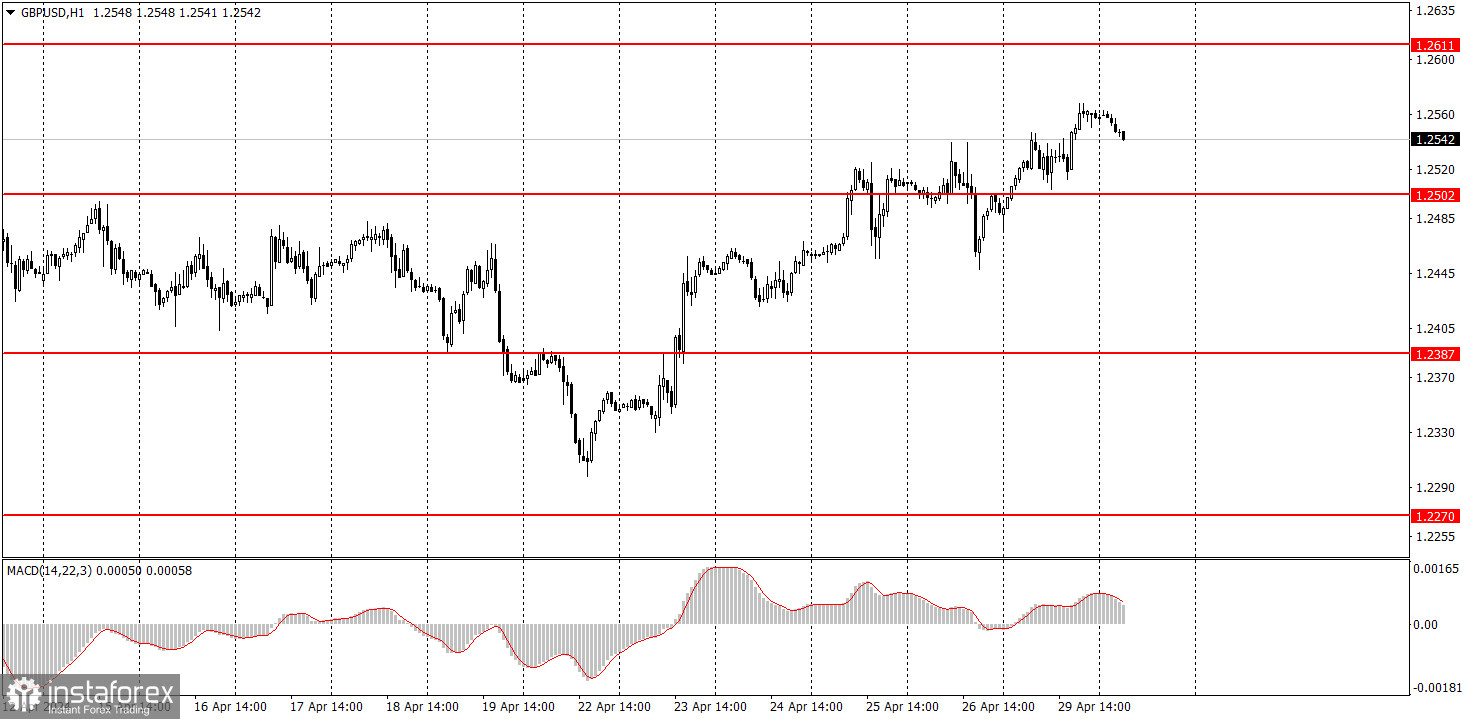Analysis of macroeconomic reports:

There are more macroeconomic events on Tuesday, and they are quite significant. It all starts in Germany, where reports on GDP, retail sales, and unemployment will be published. Like before, these data are somewhat secondary of importance, but in the event of significant values, market reaction may follow. It's difficult to expect a high value for German GDP, so the euro is unlikely to receive support from this particular report.
European GDP and inflation figures are also due during Tuesday's European market session. Undoubtedly, these reports are much more important for the market. Traders will focus on the inflation data. If it does not exceed the forecast value of 2.4% for April, the euro has no reason to strengthen. If it accelerates, then the euro may continue to correct higher, as in this case, the European Central Bank may postpone the first easing of monetary policy from June to July.
Analysis of fundamental events:
There are no notable fundamental events for Tuesday; the calendar does not contain any speeches by ECB, Federal Reserve, or Bank of England officials. Surely there will be several speeches during the day, but in the current circumstances, it is extremely difficult to expect new information from central bank representatives. We don't expect the officials to change their stance at the moment.
General conclusion:
Today, novice traders should pay attention to the eurozone inflation report. If its value aligns with the forecast or has a minor deviation, the market reaction may be weak. At the same time, accelerated inflation could trigger a rise in the euro, while a slowdown could lead to a decline. The other reports of the day are much less significant.
Basic rules of a trading system:
1) Signal strength is determined by the time taken for its formation (either a bounce or level breach). A shorter formation time indicates a stronger signal.
2) If two or more trades around a certain level are initiated based on false signals, subsequent signals from that level should be disregarded.
3) In a flat market, any currency pair can produce multiple false signals or none at all. In any case, the flat trend is not the best condition for trading.
4) Trading activities are confined between the onset of the European session and mid-way through the U.S. session, after which all open trades should be manually closed.
5) On the 30-minute timeframe, trades based on MACD signals are only advisable amidst substantial volatility and an established trend, confirmed either by a trendline or trend channel.
6) If two levels lie closely together (ranging from 5 to 15 pips apart), they should be considered as a support or resistance zone.
How to read charts:
Support and Resistance price levels can serve as targets when buying or selling. You can place Take Profit levels near them.
Red lines represent channels or trend lines, depicting the current market trend and indicating the preferable trading direction.
The MACD(14,22,3) indicator, encompassing both the histogram and signal line, acts as an auxiliary tool and can also be used as a signal source.
Significant speeches and reports (always noted in the news calendar) can profoundly influence the price dynamics. Hence, trading during their release calls for heightened caution. It may be reasonable to exit the market to prevent abrupt price reversals against the prevailing trend.
Beginners should always remember that not every trade will yield profit. Establishing a clear strategy coupled with sound money management is the cornerstone of sustained trading success.
 English
English 
 Русский
Русский Bahasa Indonesia
Bahasa Indonesia Bahasa Malay
Bahasa Malay ไทย
ไทย Español
Español Deutsch
Deutsch Български
Български Français
Français Tiếng Việt
Tiếng Việt 中文
中文 বাংলা
বাংলা हिन्दी
हिन्दी Čeština
Čeština Українська
Українська Română
Română


